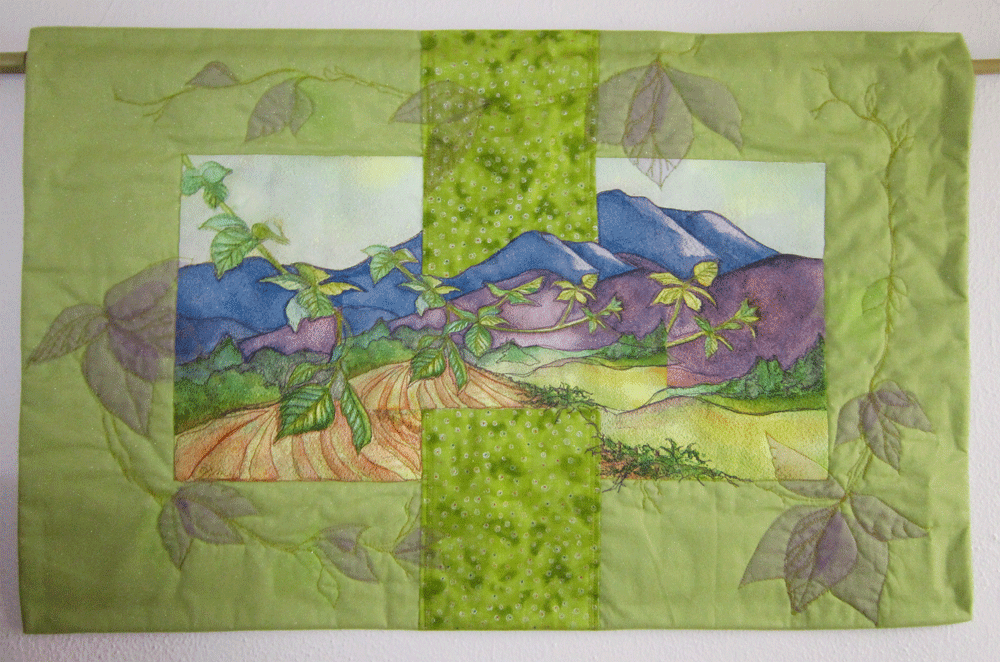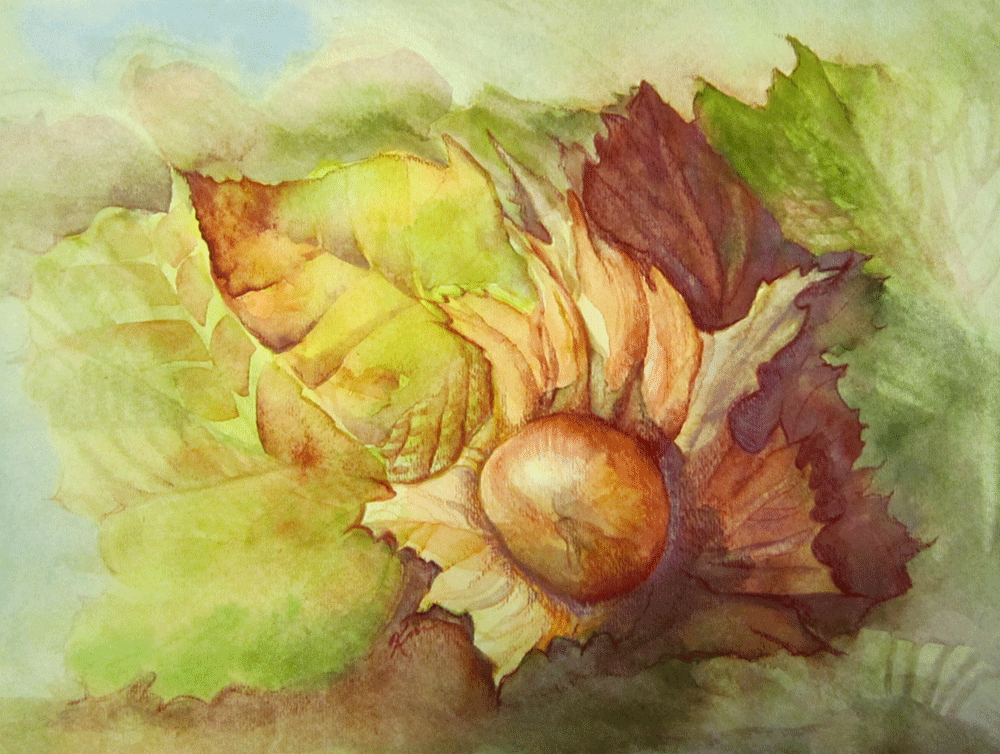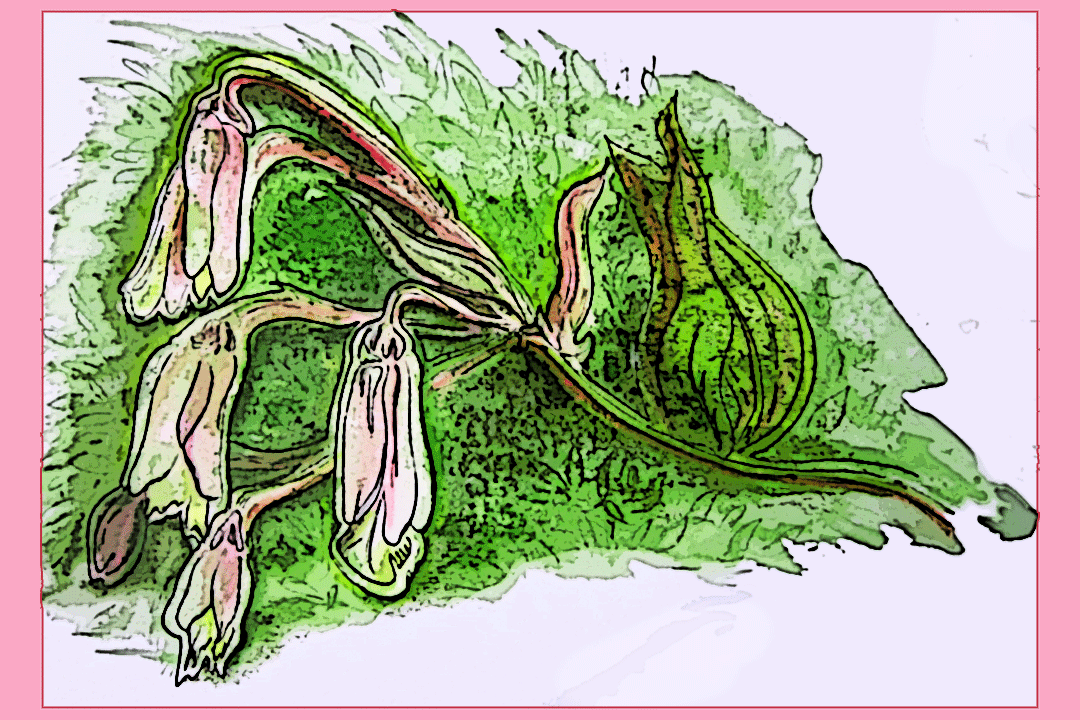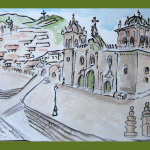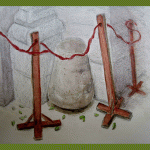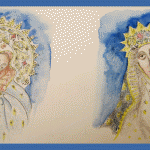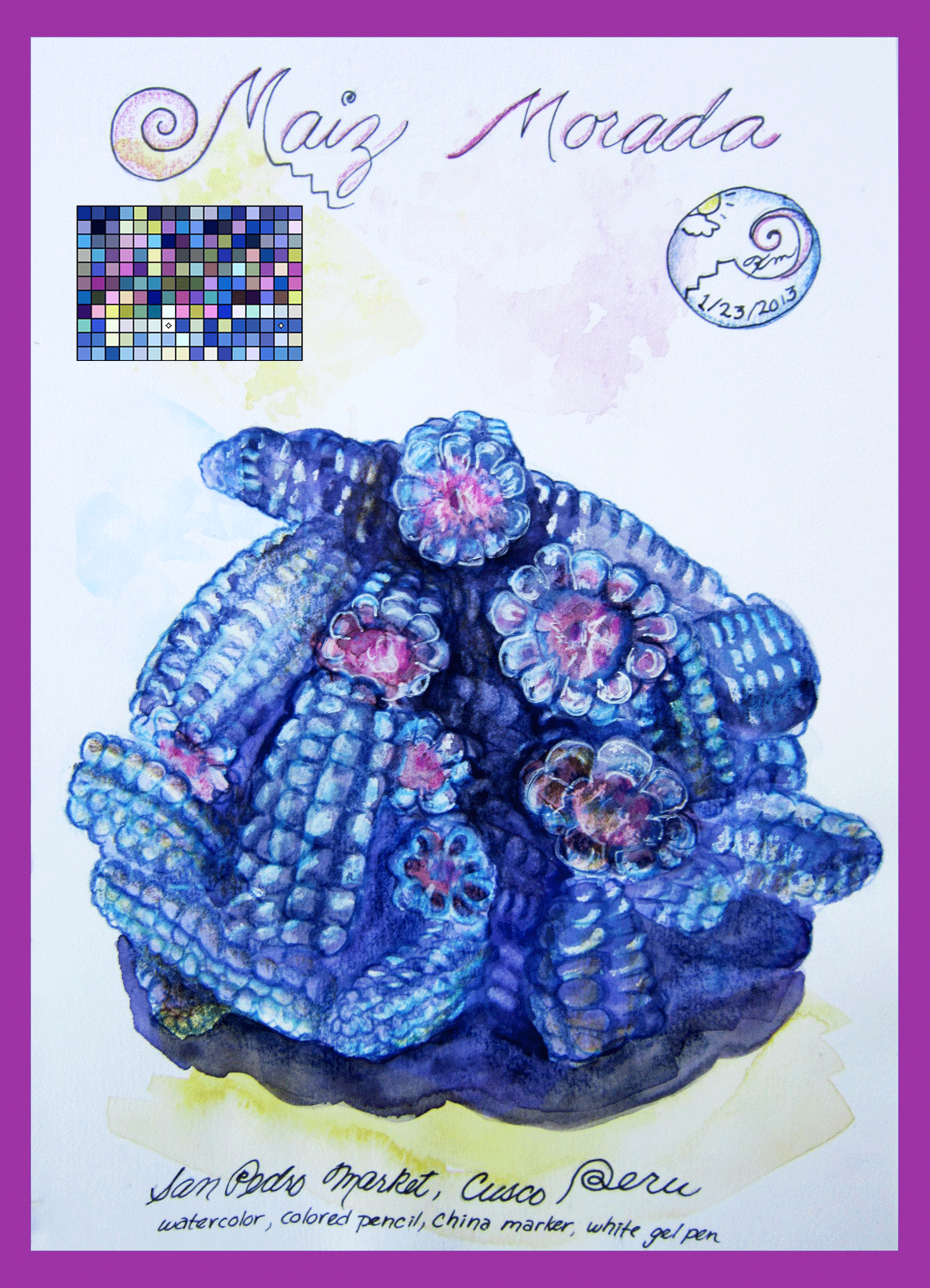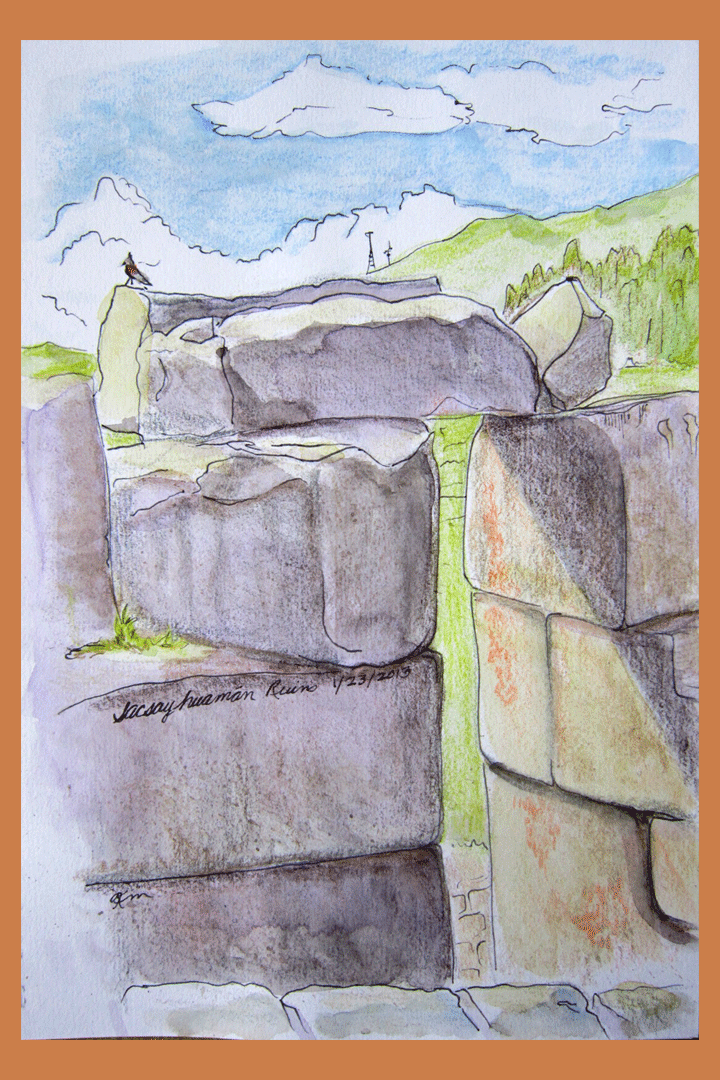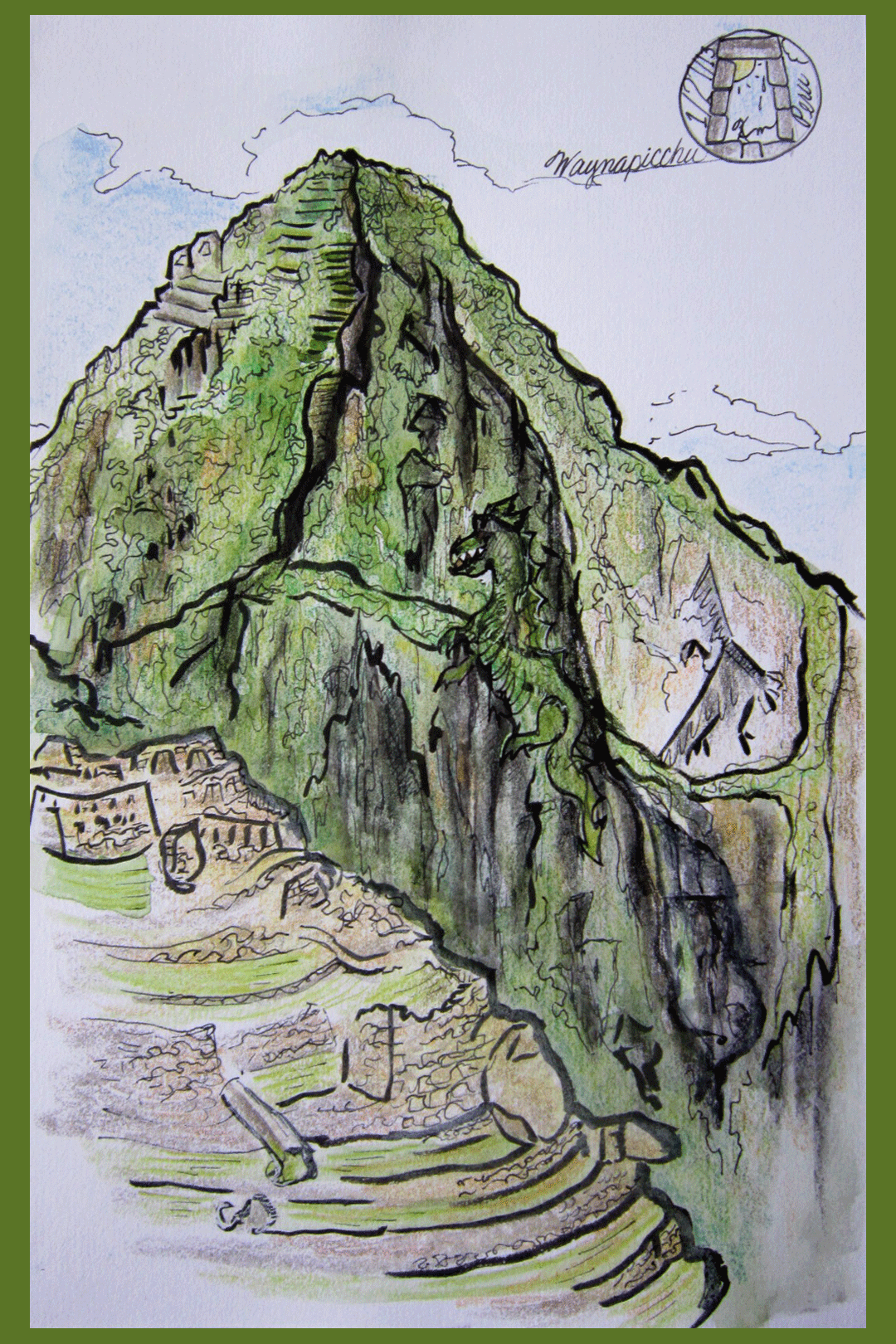
"Who Says There Are No Dragons in Peru", mixed media copyright Kerry McFall
We’re back from Peru, and in addition to several sketches, I have a few humble observations to offer about life, dragons, and bucket lists.
The closest thing that I have to a bucket list is a “Why Not!?” kind of wanderlust that takes me wherever and whenever an opportunity presents itself. Opportunities generally arise in the form of people I cherish inviting me to visit them in places that are Not Where I Am. This has taken me to New Zealand, Ireland, Germany, France, London, Botswana, Georgia, Tennessee, and several other exotic locales, and I’m always glad for the experiences, always the better for the relationships and the “Aha!” moments that can only come from stepping outside your comfort zone.
Up until a few years ago, the only “person” I knew from Peru was Paddington Bear… ( little known fact that he is a Spectacled Peruvian Bear). When daughter Corey decided to take her semester abroad in Cusco, Peru, I thought it was an interesting choice but didn’t really understand her motivations – in fact, I’m not sure SHE understood her motivations. When she wanted to go back, and back again, I understood it even less, but finally decided the only way to figure it out was… well, to just go. So we did. And it was amazing, living up to and exceeding every postcard scenario. It was also thought-provoking, providing a snow-globe sort of perspective on what happens when cultures collide. There’s not a lot of snow in the Andean snow-globe these days…
Because Corey works in the travel industry, we got the Supremo Grand Tour, and it was wonderful to meet her sweetheart Moises, and the people she works with, and to get to know people like her original Host Mom Nelly and her family. Everyone we met – the drivers, the guides, the friends, the co-workers, the shoe-shine kids, the Llama Ladies – added something to the flavor of the trip, all of them diplomats and ambassadors in their own way. I now truly admire Corey’s chutzpah at venturing alone into a completely unknown world – I certainly would not have braved it as a young woman. We also got a bonus Archaeological/Historical perspective from none other than Paolo Greer, a well-known explorer. Corey and Ben had attended a lecture he presented the week before we arrived, and he joined us for a private lecture and even dinner one night. Wow – he is a force of nature. Hopefully we will hear more about his efforts to preserve and protect what has not been plundered already.
So I encourage you to take a look at your bucket list, and go. Now. That’s what credit cards are for. The world is changing so fast that even “protected” world heritage sites cannot remain unchanged, and you won’t always be this healthy, so go – Now. You will learn something important, every day. You will experience something that makes you search your soul, every day. Do a bit of reading first – “Turn Right At Machu Picchu” by Mark Adams is a good one if you’re heading to Peru. The Internet is a great resource, but find a good travel consultant if you’re going someplace where driving laws are seen as suggestions and gringoes stick out like a sore thumb – I’m so glad we had Corey’s knowledge and experience to fall back on.
And about those Dragons… if the Incas could build all of those fabulous stone sites up there in the clouds, without spaceships or road graders or even wheelbarrows, then there could have been dragons. I’ve seen some representations of dragons – although everyone else seems to think they’re just lizards or snakes – in some of the artifacts. And when I was sketching Huayna Picchu (sp?- maybe Wayna Picchu?) I saw not only a condor outlined in the cliff, I saw a dragon. Do you see it? So there.
More sketches to come in the next few days as we get re-organized!
